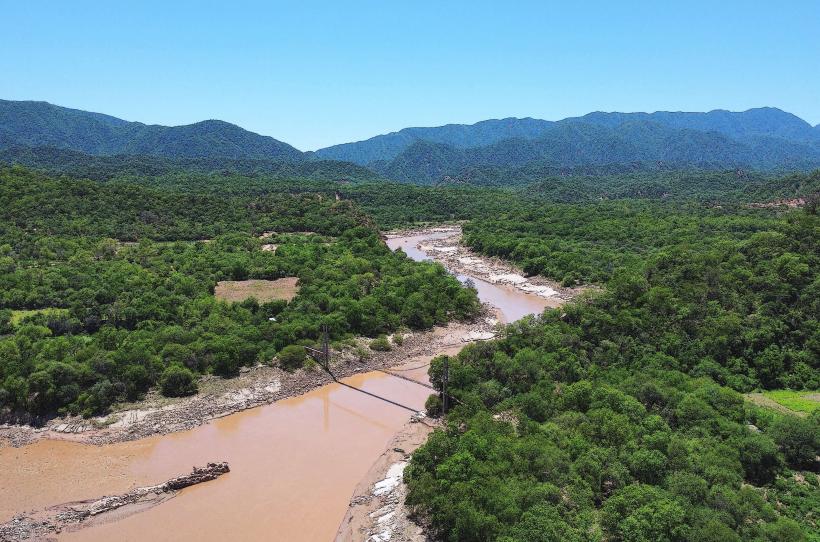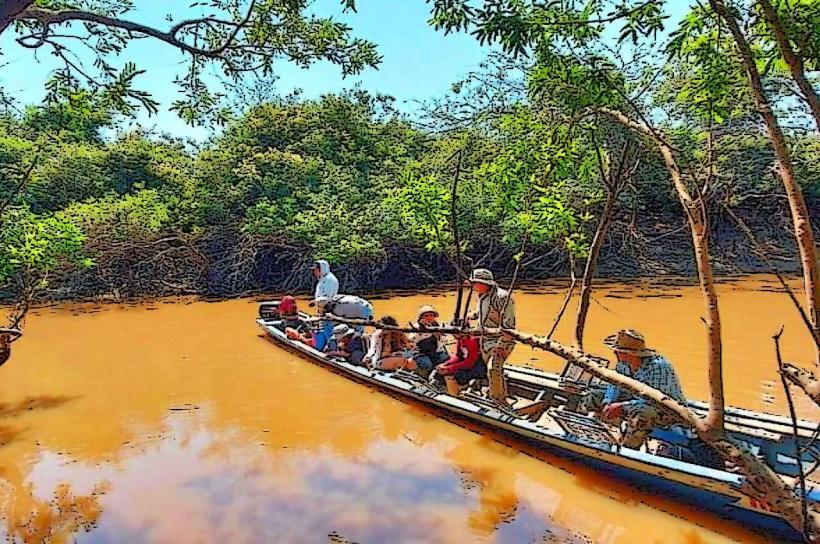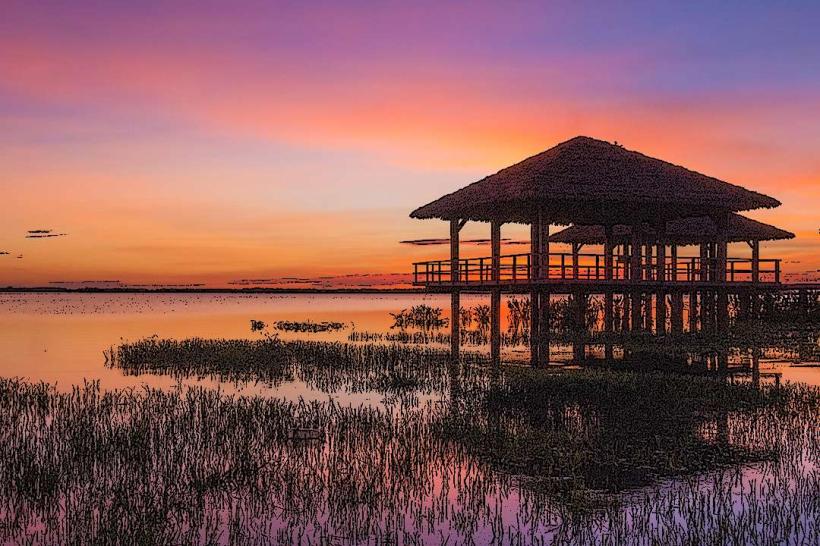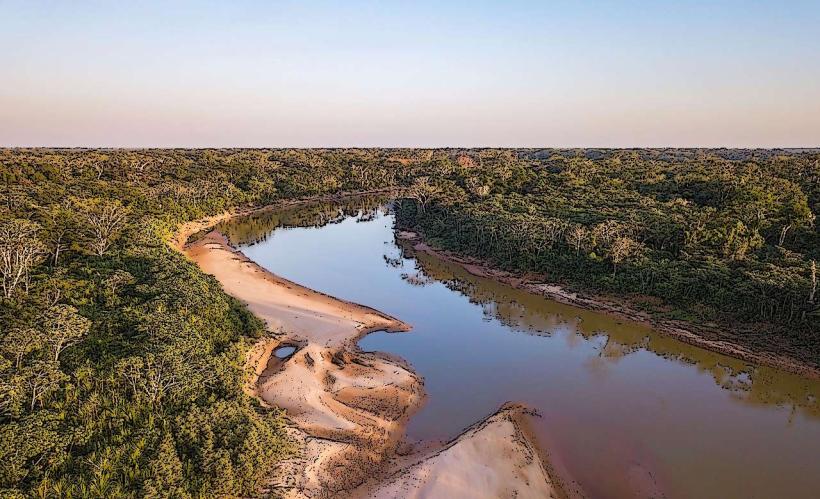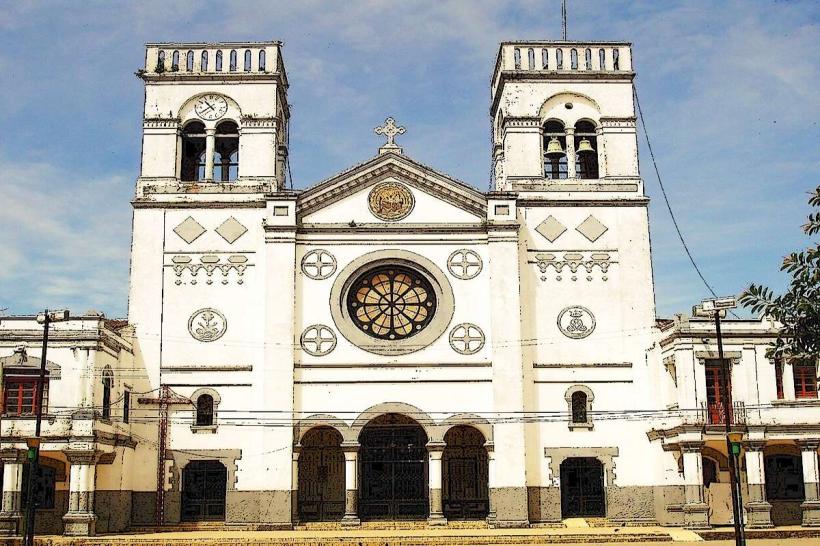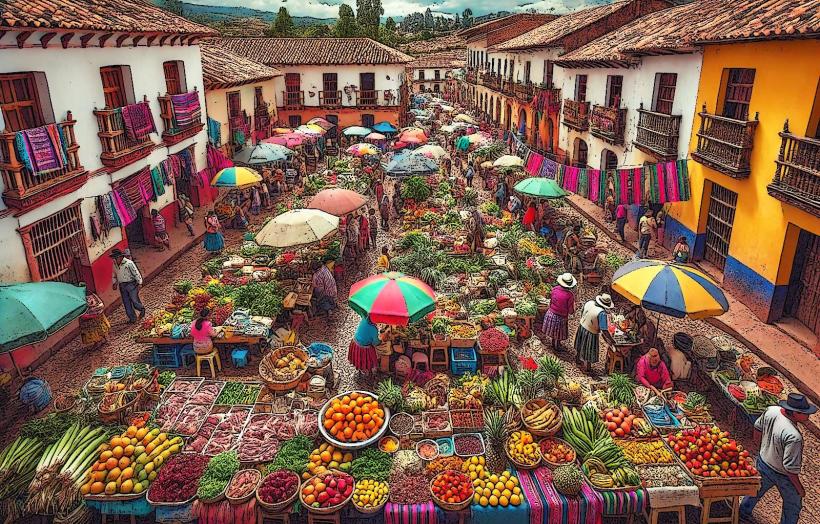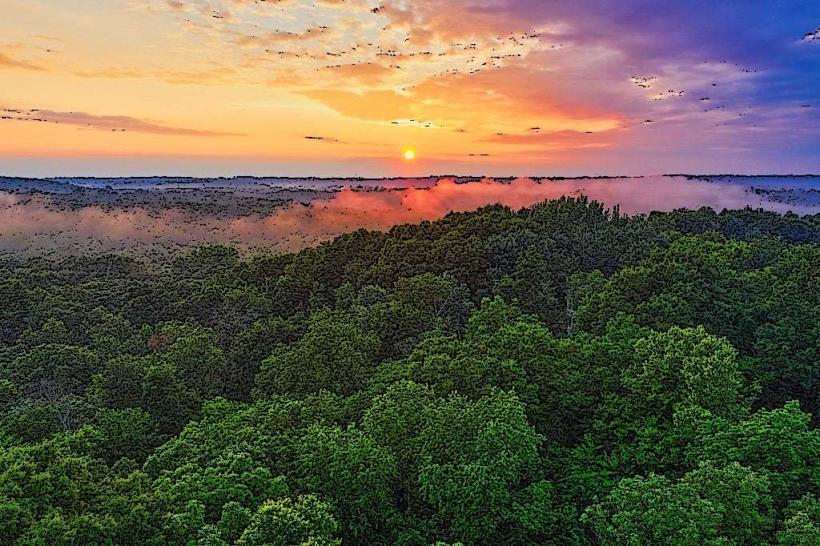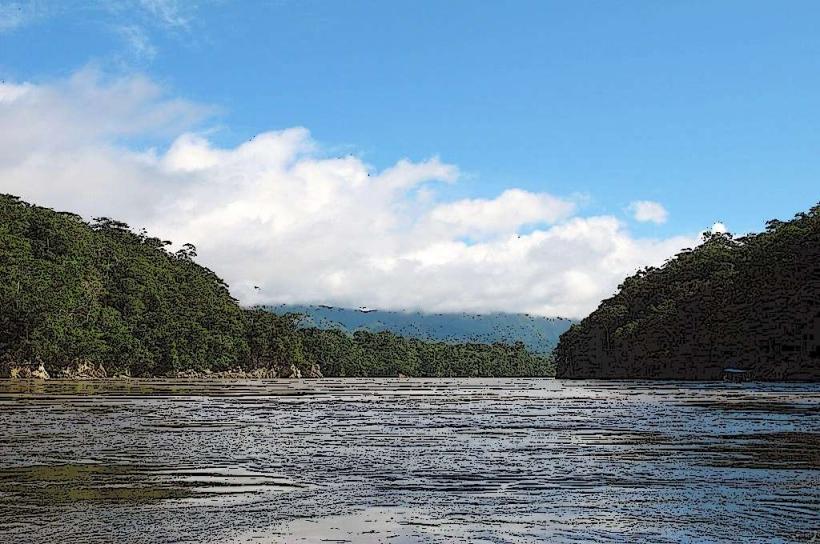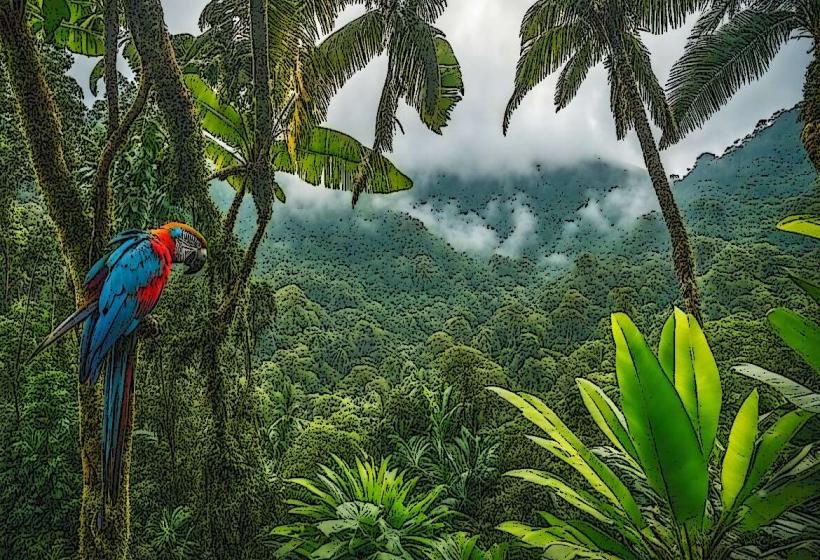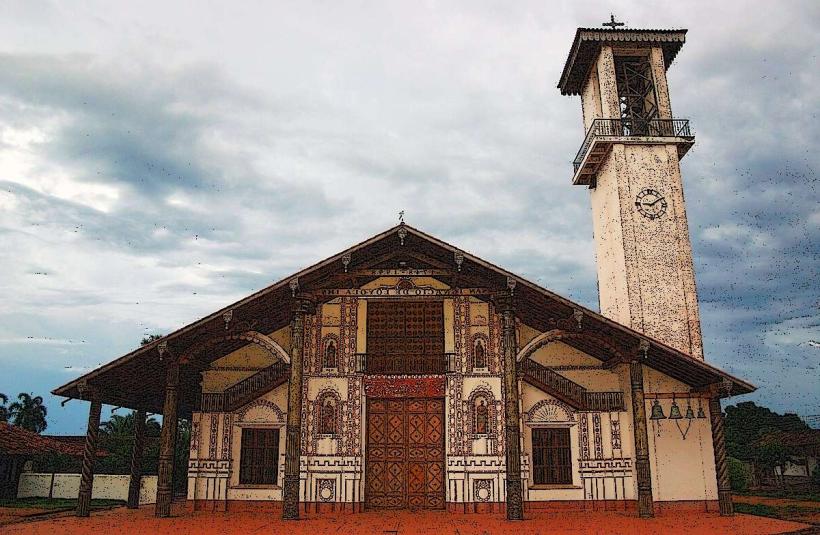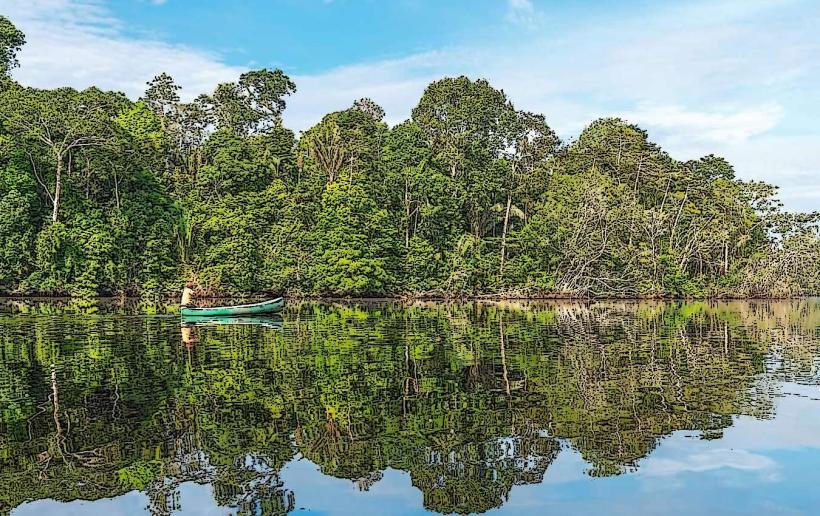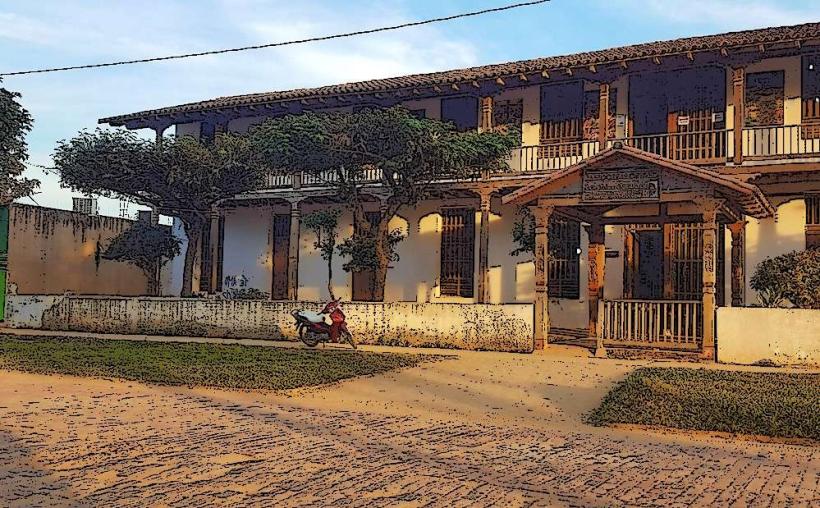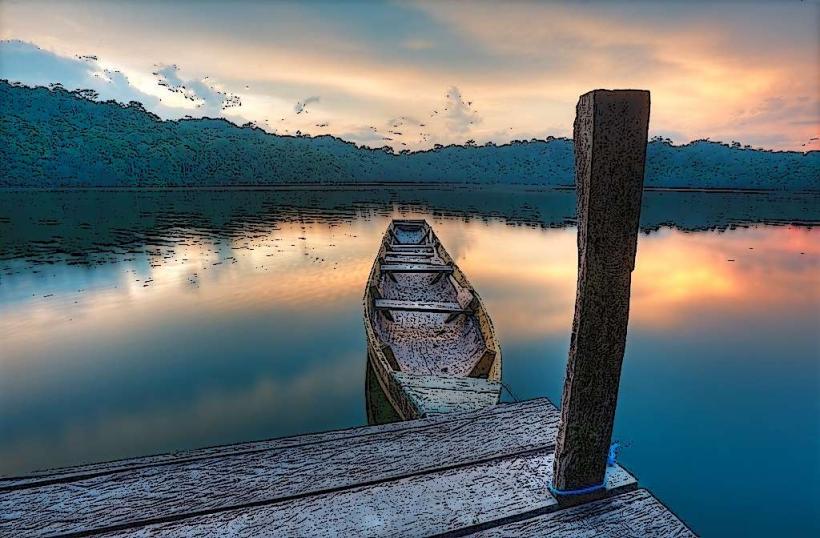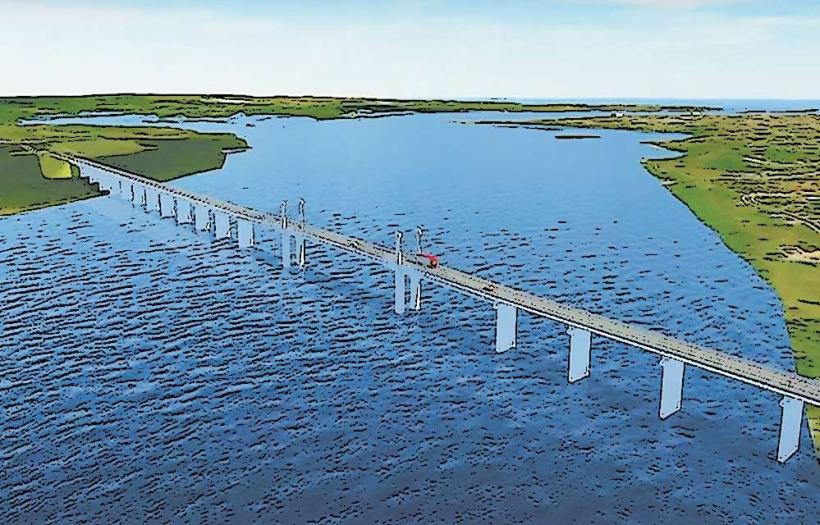Information
Landmark: Madidi National ParkCity: Beni
Country: Bolivia
Continent: South America
Madidi National Park, Beni, Bolivia, South America
Overview
Madidi National Park ranks among Bolivia’s biggest and most biodiverse reserves, and many call it one of the Amazon Basin’s crown jewels, where scarlet macaws flash through dense emerald canopy.Tucked away in northern Bolivia’s La Paz Department, Madidi stretches across 1.8 million hectares-about 4.5 million acres-shifting from steamy rainforest alive with bird calls to the wind-swept heights of the Andes.With its astonishing variety of life-bright orchids clinging to mossy branches and rare birds flashing through the canopy-it’s a top choice for ecotourism, research, and conservation.Madidi National Park lies in northeastern Bolivia’s Amazonian lowlands, with the lush Peruvian Amazon stretching to its north and the wide, sunlit Pampas spilling out to the south.It’s a quick trip from Rurrenabaque to the park, and the little riverside town is the main gateway in.Rurrenabaque sits about an 18-hour drive from La Paz, but you can hop on a small plane and be there in less time than it takes to brew a strong cup of coffee.From Rurrenabaque, travelers set out with local guides or tour operators, winding through river docks and dirt tracks to reach the park’s many gateways.Most tours wind by boat along the Madidi River, a main artery of the park, carrying visitors past tangled vines and deep into the jungle.Madidi National Park bursts with life, from tiny orchids clinging to mossy branches to jaguars prowling the forest floor, earning its reputation as one of the most biologically diverse places on the planet.The park holds a patchwork of ecosystems, from the damp, lush lowland rainforest where cicadas buzz to the cool montane forests that cling to the slopes high above.In Madidi’s tropical rainforests, thick tangles of green press in on all sides, towering trees stretch toward the sun, and plants of every shape and shade crowd the forest floor.These forests burst with life-monkeys swinging through the canopy, jaguars stalking in the shadows, tapirs and sloths moving quietly below, and flashes of scarlet macaws and bright-billed toucans cutting through the green.Pampas: In the park’s southern reaches, broad tropical savannas stretch out in golden waves, a sharp contrast to the dense, shadowy rainforest.In this ecosystem, you’ll find a whole different cast of creatures-capybaras grazing by the water, caimans lurking at the edge, and anacondas coiled in the shade.It’s a great spot for birdwatching, and you might catch sight of a heron lifting off from the shallow water.High in the Andean foothills, the park shelters misty cloud forests and diverse montane ecosystems, where moss clings to damp tree trunks.These spots are harder to reach, and they’re home to rare species built for cooler air and sudden shifts in weather.Flora and fauna thrive in Madidi National Park, where scarlet macaws flash through the canopy and countless species-some rare, some found nowhere else, many at risk-make their home.The park shelters an array of remarkable mammals, from the powerful jaguar and sleek ocelot to the shy tapir.You might hear the guttural call of a howler monkey echoing through the trees, spot a spider or squirrel monkey leaping between branches, or catch a rare glimpse of the elusive maned wolf.In Madidi, birdwatchers find paradise-more than a thousand species fill the skies, from the elusive harpy eagle and brilliant scarlet macaw to the deep-voiced great horned owl and a rainbow of toucans.The park’s home to all kinds of reptiles-from massive anacondas to watchful caimans, slow-moving turtles, and a mix of lizards and snakes basking in the sun.In the park’s wetlands and along its winding rivers, you’ll find frogs of all kinds-bright poison dart frogs, squat toads-each playing a crucial role in keeping the ecosystem alive.The park teems with insect life-bright-winged butterflies, shiny beetles, and busy ants-some so rare you won’t see them anywhere else.The park overflows with plant life, from delicate orchids and healing herbs to towering ceiba and mahogany trees.Madidi National Park draws eco-tourists and nature lovers alike, with trails that wind through rainforest alive with birdsong and countless ways to explore its breathtaking landscapes.Popular activities include trekking and hiking, with trails that wind through shady forests and follow the sound of rushing rivers.On these treks, visitors get an up-close look at the park’s rich biodiversity, with local guides leading the way and pointing out details like the sweet scent of wild orchids or the flash of a rare bird’s wings.Wildlife Watching: The park is renowned for its rich animal life, and many visitors join guided trips to catch sight of jaguars slipping through the shadows, howler monkeys calling from the treetops, and flashes of scarlet macaws overhead.You can also join a night safari to catch sight of nocturnal wildlife, from slow-moving turtles to jaguars slipping through the dark.Boat tours are a popular way to explore Madidi, gliding along the wide brown river and its winding tributaries.It’s a peaceful way to wander through the park, spotting river dolphins slicing through the water, caimans lounging on muddy banks, and a rainbow of birds overhead.Madidi is a birdwatcher’s paradise, where more than 1,000 species-from tiny hummingbirds to scarlet macaws-fill the air with color and sound.Special birdwatching tours lead visitors into hidden corners where rare, local birds flash bright feathers among the trees.Visitors can soak up the culture by meeting the indigenous communities in and around the park, from the Tsimané to the Mojos, who still weave bright patterns into their clothing.For centuries, these communities have called this region home, knowing every ridge, river, and patch of soil as their own.Cultural tours often take you into indigenous villages, where you might watch a weaver’s hands move quickly over a loom and hear stories that reveal their traditions and way of life.Madidi National Park, a UNESCO Biosphere Reserve, is cared for by the Bolivian government, working hand in hand with conservation groups to protect its lush forests and winding rivers.By creating and protecting the park, people have kept countless endangered species and fragile ecosystems safe, from the rustle of rare orchids to the cry of a distant hawk.Although it’s a protected area, the park still struggles with illegal logging, poachers slipping through at night, and the creeping impact of climate change.In the end, Madidi National Park stands alone-an extraordinary haven where nature lovers can wander dense jungle trails, wildlife enthusiasts might spot a flash of scarlet macaw wings, and adventure seekers find thrilling paths at every turn.With its towering cliffs, rare orchids, and rich mix of wildlife, it’s one of South America’s most thrilling natural reserves for ecotourism.You might trek through lush, steamy rainforest, watch condors drift high above jagged peaks, or paddle a canoe along the winding Madidi River-and no matter what you choose, you’ll leave with memories from one of the most biologically rich places on Earth.If you want to experience Bolivia’s wild beauty while helping protect it, head to Madidi National Park, where scarlet macaws flash through the rainforest and every step feels like part of something bigger.

